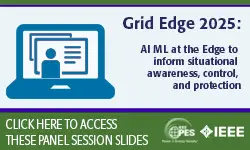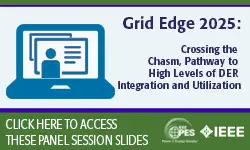Stability definitions and characterization of dynamic behavior in systems with high penetration of power electronic interfaced technologies
Nikos Hatziargyriou, FIEEE (chair), J. V. Milanović, FIEEE (co-chair), C. Rahmann, SMIEEE (secretary), V. Ajjarapu, FIEEE, C. Canizares, FIEEE, I. Erlich, SMIEEE, D. Hill, FIEEE, I. Hiskens, FIEEE, I. Kamwa, FIEEE, B. Pal, FIEEE, P. Pourbeik, FIEEE, J. J. Sanchez- Gasca, FIEEE, A. Stankovi?, FIEEE, T. Van Cutsem, FIEEE, V. Vittal, FIEEE, C. Vournas, FIEEE
-
Members: FreePES
IEEE Members: $45.00
Non-members: $70.00Pages/Slides: 42
A task force set up jointly by IEEE Power System Dynamic Performance Committee (PSDPC) and CIGRE had addressed the issue of stability definition and classification in power systems from a fundamental viewpoint and had closely examined the practical ramifications. The relevant report published in 2004, primarily dealt with fairly slow, electromechanical phenomena, typically present in power systems dominated by synchronous machines and their controls. Since that time, the dynamic behavior of power systems has gradually changed due to the increasing penetration of converter interfaced generation technologies, loads, and transmission devices and has progressively become more dependent on (complex) fast-response power electronic devices, thus arising new stability concerns. In recognition of this change, a Task Force was established by IEEE PSDPC in 2016 to re-examine and extend, where appropriate, the classic definitions and classifications of the basic stability terms. This report summarizes the results of this work and presents extended definitions, characterization and classification of power system stability.


